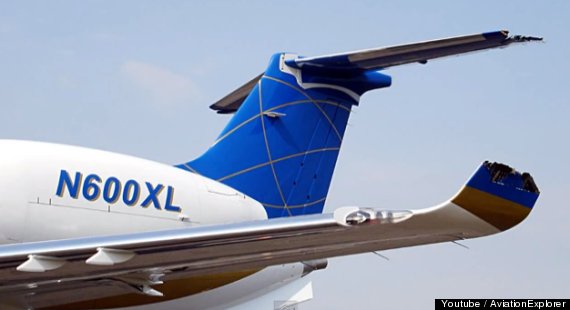When Malaysian Airlines flight MH370 disappeared without a trace over Southeast Asia sometime Saturday, a persistent question quickly emerged: How could an airliner just vanish? But as the days continue to pass without any sign of the plane, we have been reminded that flight is a complex process that we now frequently take for granted. That's right, maybe this whole flying through the air in a metal tube with wings thing isn't as easy or simple as we make it look, and sometimes, albeit extremely rarely, it does go wrong.
From the beginnings of the remarkable achievement of human flight and the mysterious disappearance of American aviator Amelia Earhart, a number of seemingly unbelievable incidents have helped shape how we fly. Some of the following air incidents ultimately made airplane travel safer, but usually only after emphasizing the fact that the skies -- and what we do in them -- can sometimes be shockingly unpredictable. Perhaps it's amazing that things almost always go right.
1. A commercial airliner went down over the Atlantic and wasn't found for five days.
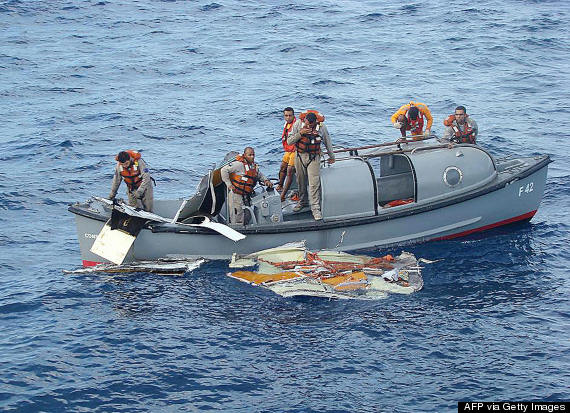 Crew members of a Brazilian frigate recover debris from Air France flight 447.
Crew members of a Brazilian frigate recover debris from Air France flight 447.
A little after 10 p.m. on May 31, 2009, Air France Flight 447 took off from Rio de Janeiro, Brazil to make its way across the Atlantic to Paris' Charles de Gaulle International Airportf. The Airbus A330-203 was carrying 216 passengers, as well as 12 crew members. The aircraft was last contacted at 2:10 a.m. on June 1. Five days later, wreckage of the plane finally began showing up in the Atlantic. All aboard were presumed dead and the cause of the crash remained largely undetermined until the plane's flight data recorder and the cockpit voice recorder were recovered nearly two years later, about two miles under the ocean.
Analysis of the black boxes determined that Air France Flight 447's autopilot failed and the pilots mistakenly raised the nose of the plane causing it to stall. The pilots were reportedly unaware of the stall and continued pulling up, which resulted in the plane eventually plummeting intact from 38,000 feet, falling at roughly 10,000 feet per minute. Experts concluded that the plane broke apart not in the air but upon impact with the Atlantic Ocean.
2. An American Airlines plane was stolen off a runway in Luanda, Angola and has never been seen again.
 The stolen American Airlines plane, 14 years prior.
The stolen American Airlines plane, 14 years prior.
It was 2003, and Ben Charles Padilla -- airline mechanic, flight engineer and private pilot -- was in charge of maintenance of a used Boeing 727 American Airlines plane (owned by a Miami airline leasing company), that had been sitting on the runway in Luanda, Angola at Quatro de Fevereiro Airport for a little over a year. On May 25, 2003, the plane inexplicably made its way down the runway, without authorization and with its transponder turned off. The FBI and CIA believe Padilla was at the controls, but reports vary as to how many people were with him upon takeoff. U.S officials suspect the plane was used for illegal activity, such as running drugs, guns or perhaps even crashed for insurance money, but no one is certain. As of today, the plane and Padilla remain missing.
3. An Australian pilot reported a UFO hovering above him mid flight. He and his plane are still missing.
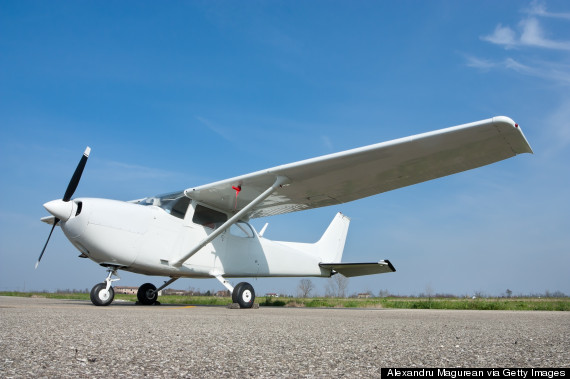 Single engine Cessna craft similar to that flown by Valentich.
Single engine Cessna craft similar to that flown by Valentich.
In October 1978, Frederick Valentich was flying over Melbourne's Bass Strait when he reported that an aircraft that he could not identify was hovering a thousand feet above him. The flight tower told Valentich they detected no other aircraft in the area. At about 7:12 p.m., Valentich told the tower the object was "hovering and it's not an aircraft." This was followed by 17 seconds of unidentified "metal scraping sounds" and then silence. Valentich and his Cessna 182L were never seen again.
Without the wreckage, we'll never really know what happened, but subsequent reports suggest it is likely that Valentich became disoriented, possibly misjudged his altitude and crashed. Given that the disappearance took place over 30 years ago, and no wreckage has ever been found on land, it leads many to believe that Valentich must have gone down over water, which could conceivably hide a crashed plane indefinitely.
4. The roof of a commercial airliner blew off mid-flight, leaving passengers and crew exposed to the elements. The plane still managed to land safely.
 Passengers recover as the exposed cabin of Flight 243 looms in the background.
Passengers recover as the exposed cabin of Flight 243 looms in the background.
On April 28, 1988, Aloha Airlines Flight 243 was carrying passengers from Hilo to Honolulu, Hawaii on a Boeing 737-297 when an explosive decompression caused the roof just outside the cockpit to rupture, leaving a gaping hole through which debris from the aircraft and unsecured items from the cabin were rapidly sucked out. One flight attendant, Clarabelle Lansing, was also ejected from the plane, and her body was never found. She was the lone fatality in the catastrophic incident, which according to the NTSB, was caused by a structural failure in the fuselage due to age and stress on the 19-year-old aircraft. Others had different hypotheses, but following the NTSB's report, safety inspection and construction standards were changed for this line of commercial airliner.
5. A pilot successfully crash-landed a 737 in the middle of the jungle after flying in the wrong direction upon takeoff.
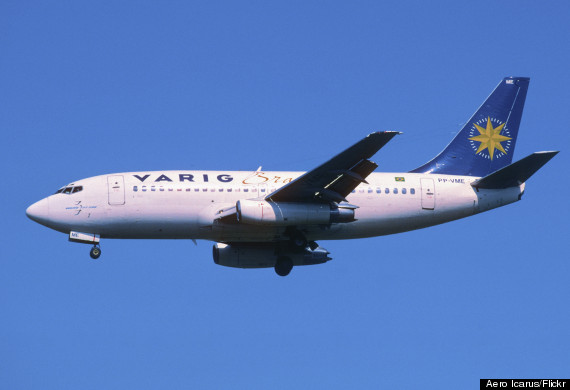 A Varig 737 similar to the one piloted into the Amazon.
A Varig 737 similar to the one piloted into the Amazon.
Varig Flight 254 was supposed to be taking a plane full of passengers on the final leg of a flight from São Paulo to Belém, in Brazil, on Sept. 3, 1989. After completing a number of successful stopovers, the crew prepared for the home stretch, a short journey from Marabá to Belém. When the pilot went to input the heading for the final flight, he misread the coordinates, leading him to direct the plane to fly in the opposite direction, into an uninhabited section of the Amazon. The true extent of the mistake went unnoticed until it was too late, as the pilots attempted to find nearby airfields to land in when they couldn't find the Belém runway. The plane eventually ran out of fuel and the crew was forced to take the aircraft down over an isolated stretch of rainforest.
The impact and ensuing disintegration of the plane led to eight fatalities. Survivors of the crash then hiked out of the jungle to retrieve help for their companions. A total of 13 were killed as a result of the incident.
6. A commercial jetliner went down in the ocean just short of its island destination. Out of 153 people on board, only one survived.
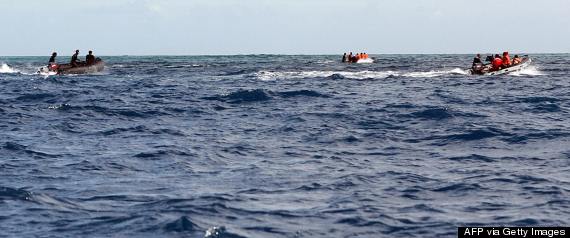 French and Yemeni divers search the Indian Ocean for the wreckage of Yemenia Flight 626.
French and Yemeni divers search the Indian Ocean for the wreckage of Yemenia Flight 626.
Yemenia Flight 626, an Airbus A310-324, crashed into the Indian Ocean off the coast of the small island of Comoros on June 30, 2009. Thirteen hours after the crash, rescuers spotted 14-year-old Bahia Bakari clinging to debris in the ocean. Without a life vest and apparently unable to swim, Bakari was the only survivor of the flight, which also claimed the life of her mother. An investigation of the crash ultimately determined that the plane had gone down due to crew error.
7. The U.S. Navy shot down a commercial jet thinking it was an F-14.
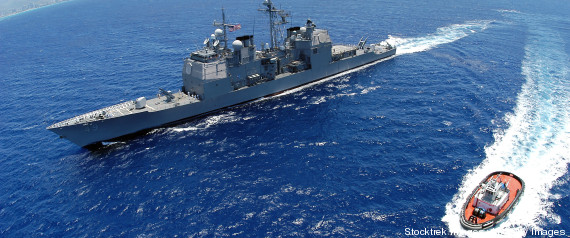 The U.S.S. Vincennes.
The U.S.S. Vincennes.
With the Iran-Iraq war still going strong in 1988, there was still a great deal of uneasiness in the Persian Gulf. Iran Air Flight 655 left from Tehran on its way to Dubai on July 3. Patrolling the Gulf that day was the USS Vincennes, a U.S. Navy guided missile cruiser. The U.S. claims that it attempted to make contact with the aircraft, which did not identify itself, and thus was forced to shoot down the plane using two surface to air missiles, killing all 290 on board.
The U.S. military has stated that it believed the Airbus A300 was actually an F-14 fighter jet, a much smaller and much faster aircraft. The lack of concrete reasoning for firing upon the aircraft, along with its historical opposition to Iran, did not paint the U.S. in a forgiving light. And though it has never admitted fault, the U.S. government paid the families of the deceased $61.8 million in restitution.
8. A plane veered off the runway shortly after takeoff, severing its wing and exploding onto a nearby highway.
 A flatbed truck hauls the remains of Northwest Airlines flight 255's two engines.
A flatbed truck hauls the remains of Northwest Airlines flight 255's two engines.
Northwest Airlines Flight 255 took off just outside of Detroit on August 16, 1987. The McDonnell Douglas MD-82 departed the runway shakily and veered off in one direction, severing the fuel-filled wing of the plane on a light pole. That ignited the plane as it crashed and broke apart on nearby Interstate 94. A total of 148 passengers and six crew members were killed in the accident. Two people on the ground were also killed. The lone survivor of the flight was a 4-year-old girl named Cecelia Cichan. She lost her mother, father and 6-year-old brother in the incident. It remains the deadliest sole-survivor crash in the history of aviation.
9. A corporate jet had part of its wing and tail clipped by a commercial airliner -- at 37,000 feet.
New York Times travel writer Joe Sharkey was flying above the Amazon rainforest on September 29, 2006 in what he called an "uneventful and comfortable flight." Suddenly, the $25 million Embraer Legacy 600 corporate jet he was flying in was hit. By what, no one knew. The passengers could only see that part of a wing was gone. And all this at nearly 40,000 feet in the air, above the Amazon. The pilots, unsuccessful in contacting anybody on the ground, desperately looked for a place to land. Finally, they located a hidden military base and miraculously brought the aircraft down safely.
Sharkey and the other passengers all celebrated and joked about their brush with death, wondering what might have hit them. Then news came. A Brazilian flight went missing right in the area where they had reported the collision. It was carrying 155 passengers. The two aircraft had somehow been traveling at the same altitude in opposite directions, in the same space, each at about 500 miles per hour.
The other craft turned out to be Gol Transportes Aéreos Flight 1907, a Boeing 737 traveling from Manaus, Brazil to Rio De Janeiro. According to crash reports, the Legacy 600's left winglet (part of the wing that juts vertically off the wing's tip) had collided with and sliced off nearly half of the Boeing 737's left wing. This caused Flight 1907 to nose dive from 37,000 feet into an uncontrollable spin, which broke the aircraft apart in midair, sending all passengers and crew members to their death in the jungle below.
___________________________________________________________
All of these incidents were as tragic are they were unusual, which is perhaps why they are so fascinating. Flying in an airplane is seemingly inevitable. The airline industry has made it possible for us to jet coast to coast, continent to continent and everywhere in between, pretty much at the drop of a hat. And while the two million-plus passengers who board more than 30,000 flights every day in the U.S. (and no doubt others around the world) love to complain when things go wrong and flights are delayed or interrupted by crying babies, being involved in something like one of the incidents above seems almost unthinkable.
And that's not by accident: The airline industry has continued to improve safety standards for both planes and broader flight protocols, ensuring that we almost always get from point A to point B without any real trouble, much less danger. You have a one-in-11 million chance of being killed in an airplane crash, meaning you're much more likely to be eaten by a shark, or as some airline executives claim, more likely to die in the airport -- and certainly while driving there -- than on the plane itself.
